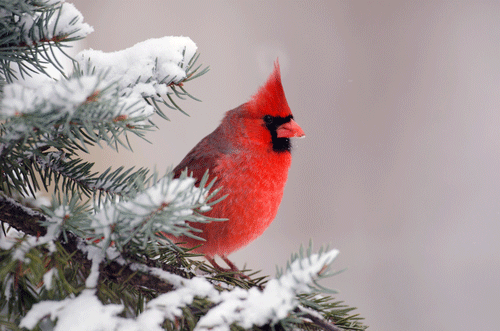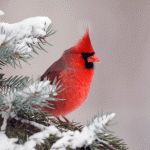You installed the perfect bird feeder, but are running into a problem. Few wild birds are visiting. Maybe you are not even sure whether any have visited at all. Now, you are pummeled with questions: How do I persuade birds to try a new bird feeder? Is it worth the effort to try?
Welcome to your first match of Team Sylvester versus Team Tweety. Follow these tips, and it won’t be long before backyard birds agree that you’re not some “bad pussycat” after all.
1. Check Your Wild Bird Seed. Is the seed fresh? Are there any insects, or has moisture caused the seed to mold and clump? If so, refill it.
2. Be Patient. Most varieties of wild birds will not look for a new food source until their current “go to” locations are used up. The fact that your feeder has not received visitors yet is not necessarily a bad sign. The delay could easily range from a few days to a two months, depending on the season.
3. Check Your Location. Is this your second bird feeder? If so, consider locating it near your old bird feeder. Your existing “clientele” will be quicker to notice it after your first bird feeder’s wild birdseed supply dries up.
4. Resort to Bribery. Try adding a dollop of peanut butter or lard on the edge of the feeder with seed sprinkled on top. This is an old, generally effective trick, but be sure to check it after a couple days. If the tasty goop hasn’t been completely gobbled down within a couple of days, it might attract ants.
5. Scatter Seed. If your bird feeder is installed over a patio or other hard surface, scatter seed on the ground below the bird feeder to attract birds to the area. This particular trick is not advised for bird feeders hanging over flowerbeds, however. Wild birdseed grows quickly. While a patch of knee-high birdseed will certainly attract birds’ attention, you might end up weeding for weeks!
6. Leave a Treat Trail. Set up a stepladder below your new feeder, and place seed on the bottom rung. After the birds start to show interest, place seed on the higher rungs to draw their attention to the feeder hanging over the ladder. When you spot wild birds nibbling from the actual feeder, they are ready for you to take the ladder away.
7. Don’t Fill Your Feeder To The Brim. Wild birds will arrive at their own pace, whether your fill the feeder to the top. To minimize the possibility of some of the seed starting to spoil, only partially fill your bird feeder until the first birds come around. Put another way, make your feeder the Shark Tank presentation of avian venture capitalism.
8. Know Which Wild Birds to Watch For. Chickadees are usually the first to begin exploring a new food source, so keep your eyes peeled for those brave little guys! Other birds will follow in time.






